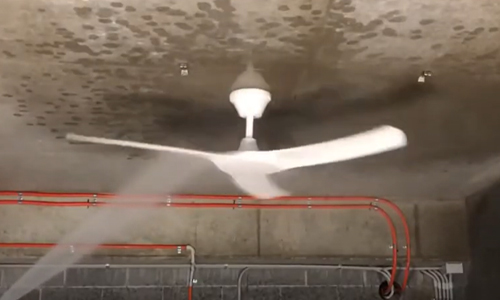Cleaning Your Ceiling Fan
Cleaning Your Ceiling Fan
As summer approaches, most ceiling fans have probably not had much use during the winter months. When a fan is dormant it can can accumulate a lot of dust; if you fire it up without cleaning it first, it can be a hazard and unpleasant for anyone suffering from asthma or allergies. And it can create a lot of general mess.
The best thing to do is beat the heat and clean your ceiling fans before the warmer seasons start.
Fans are made from different materials: wood, metal, plastic or stainless steel.
Cleaning methods of these materials are all different. Here are some tip and tricks.
Wooden blades: using a duster can be the easiest way of cleaning the fan, but some dust can’t always be reached or removed by using this method. We recommend using a damp cloth to wipe down the top of the blades. Also, make sure to dry the blades after doing so. Moisture can affect some wooden blades so making sure they’re dry is important.
Metal blades: much the same as wooden blades metal blades can get affected with moisture, rusting can form. Using a dry cloth may be a viable option for metal blades. Using the brush function on a vacuum cleaning can also help dealing with the dust particles that may present after cleaning a fan.
Plastic blades: Plastic blades can be cleaning using any of the above methods as water does not affect them at all.
Stainless steel: cleaning stainless steel can sometimes be a more difficult. Using a duster and especially water can often leave streak marks on the blades, making them seem even dirtier. Use stainless steel wipes - these can help reduce the streaks and give you a nice polish to the existing steel.
Safety
The most important thing about cleaning a ceiling fan is safety. We recommend using a ladder that has all feet on the ground. No wobble! If possible, find someone who can assist by holding the ladder as well.
Always make sure that the power to the fan is off (you can turn it off at the isolator switch), and that no one can accidentally switch it on. If the fan uses a remote control, it is preferable to keep the remote in view and out of reach.
Be careful not to damage the fan during cleaning. Clean gently, otherwise you can throw off its balance during operation.
While cleaning your ceiling fan, it is also a good time to check if your fan is switched to summer mode and not winter, avoiding any confusion and wasted cooling opportunities in the warmer months.
Another hot tip: check for any rusting, especially the screws that hold up the blades. If they are rusted in any way, we highly recommend having them, replaced.
And last, never attempt to repair or fix a ceiling fan by yourself. Installation and repairs must be done by a qualified electrician.





